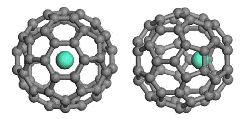Department of Chemistry
Date of this Version
11-22-2002
Abstract
Among many popular potential models of water, the nonpolarizable four-site TIP4P potential is one of the more widely used. Recently, two new potential models of water on the basis of the TIP4P potential have been developed. One is the four-site Dang–Chang polarizable potential and another is the five-site TIP5P potential. The former is designed to describe not only bulk and interfacial properties of liquid water but also microclusters of water. The nonpolarizable TIP5P potential is the latest version in the TIP series from the Jorgensen group. Compared with the TIP4P potential, for example, the TIP5P potential gives a much improved description of the so-called temperature of maximum density. Recently we used the TIP4P, SPC/E and Dang–Chang potentials to study ion-induced droplet formation. The supersaturation was not evaluated due to the lack of vapor–liquid coexistence density for the Dang–Chang model. In this note, we report Gibbs ensemble Monte Carlo (GEMC) simulation, of vapor–liquid coexistence densities (the binodal curves) for the TIP5P and Dang–Chang models of water. Similar simulations have been carried out for the SPC/E water in the presence of uniform external electric fields.



Comments
Published by American Institute of Physics. J. Chem. Physics VOLUME 117, NUMBER 20, 22 NOVEMBER 2002. ©2002 American Institute of Physics. Permission to use. http://jcp.aip.org/.